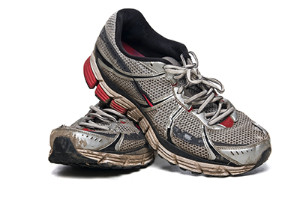Merrillville, IN
Munster, IN
When Is It Time for New Running Shoes?
Tuesday, 07 June 2022 00:00
A common guideline for how long to keep running shoes is between 400 and 600 miles. But that’s only part of the story. The mileage you get from one pair depends on your weight, how you run, and the surfaces you typically run on. Plus, even though the uppers have not worn out and the tread is in good shape, the cushioning may be shot. With advances in running shoe materials, a pair of shoes that still looks to be in good shape may have worn out its welcome. One way to help determine this is to pay attention to your pain. If you feel foot, ankle or knee pain after a run, it can be a sign that your shoe’s cushioning has diminished. Midsole creases or lean patterns when viewing the shoe from the back are other signs. If you alternate pairs of running shoes, experts suggest keeping track of the mileage for each pair separately. As a runner, you may wish to have an ongoing relationship with a podiatrist who can monitor the health of both your feet and your shoes.
All runners should take extra precaution when trying to avoid injury. If you have any concerns about your feet, contact Ahmad Elsamad, DPM of The Institute of Foot & Ankle Reconstructive Surgery . Our doctor will treat your foot and ankle needs.
How to Prevent Running Injuries
There are a lot of mistakes a runner can make prior to a workout that can induce injury. A lot of athletes tend to overstretch before running, instead of saving those workouts for a post-run routine. Deep lunges and hand-to-toe hamstring pulls should be performed after a workout instead of during a warmup. Another common mistake is jumping into an intense routine before your body is physically prepared for it. You should try to ease your way into long-distance running instead of forcing yourself to rush into it.
More Tips for Preventing Injury
- Incorporate Strength Training into Workouts - This will help improve the body’s overall athleticism
- Improve and Maintain Your Flexibility – Stretching everyday will help improve overall performance
- “Warm Up” Before Running and “Cool Down” Afterward – A warm up of 5-10 minutes helps get rid of lactic acid in the muscles and prevents delayed muscle soreness
- Cross-Training is Crucial
- Wear Proper Running Shoes
- Have a Formal Gait Analysis – Poor biomechanics can easily cause injury
If you have any questions, please feel free to contact our offices located in Merrillville, and Munster, IN . We offer the newest diagnostic and treatment technologies for all your foot care needs.







